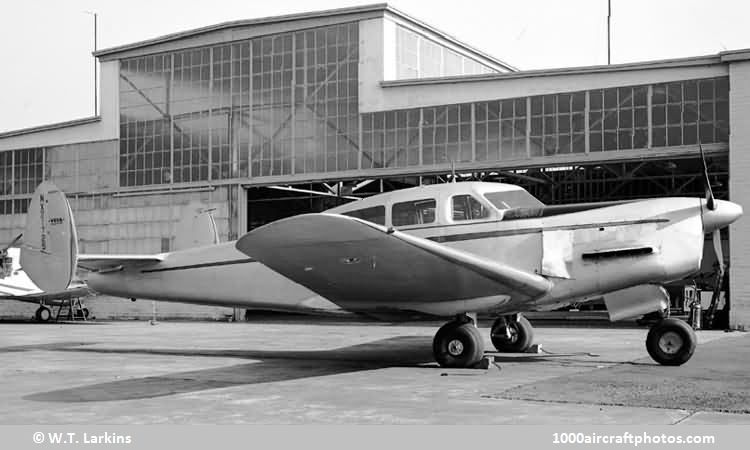Moreover, before proceeding with the design, Lockheed asked AiRover to assemble from available components an Altair 8G intended to serve as a flying teststand for the twin Menasco engine. This test bed was first flown in December 1937 and soon confirmed the merits of its power plant, thus leading to the decision to proceed with the design of a similarly-powered five-seat feeder-liner.
During 1938, by which time the AiRover Company had been reorganized as the Vega Airplane Company, its president, Mac V.F. Short, undertook to design the new feeder-liner. With Jack Wassail as project engineer, the aircraft was built in the new plant A-1 and emerged in the spring of 1939 as a low-wing cabin monoplane with conventional tail surfaces. Its tricycle landing gear retracted aft, with the wheels partially protruding beneath the nose and wing. The power plant, known as the Unitwin, consisted of two 260 hp Menasco C6S-4 engines driving a single, two-blade, variable-pitch propeller.
Named the Starliner and bearing the experimental registration NX21725, the first totally new aircraft of the Vega Airplane Company made its maiden flight at Burbank on April 22, 1939, with Vern Dorrell as pilot and J.B. Kendrick as engineering observer. This first flight, however, ended with an emergency when the propeller accidently slipped into fine pitch. Vern Dorrell succeeded in landing on a vacant field, with minimum damage to the aircraft.
Soon repaired, and fitted at that time with twin vertical tail surfaces, the Starliner resumed its trials but was damaged again when Bud Martin had to land it on its main wheels when the nose wheel failed to come down. With the nose protected by the partially protruding front wheel, the aircraft again escaped with only slight damage to its lower cowling.
Once more repaired, the Starliner satisfactorily completed a total of 85 flying hours; but its limited capacity, pilot and four or five passengers, was found to be too small to satisfy the needs of the airlines. Moreover, by then Lockheed needed Vega Airplane Corporation's factory for military aircraft production, and development of the Starliner was discontinued. It ended its life as a non-flying machine with a film studio."
Span: 41 ft 0 in (12.5 m)
Length: 32 ft 5 in (9.88 m)
Height: 8 ft 6 in (2.59 m)
Empty weight: 4,190 lb (1,901 kg)
Loaded weight: 6,000 lb (2,722 kg)
Max speed: 210 mph (338 kmh) at 7,500 ft (2,285 m)
Cruise speed: 178 mph (286 kmh)
Climb: 1,350 ft (411 m)/min
Service ceiling: 21,500 ft (6,555 m)
Range: 640 mls (1,030 km)
